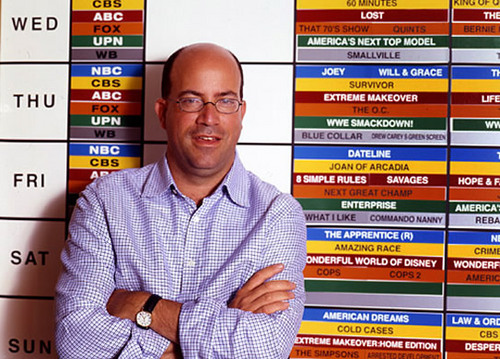When we go to a movie, we know we’re watching entertainment, but are we watching art? Big Hollywood readers should take a look at Abraham Kaplan’s 1966 essay, “The Aesthetics of Popular Art” if they are interested in a set of criteria that distinguishes popular art from what some might call “high art.”
Kaplan’s essay is too detailed to summarize here, but there are a few criteria that crystallize exactly why most films don’t resonate with audiences. So if you’ve ever wondered why it is that a movie just didn’t do it for you, even if it was entertaining, this may help explain it.
By the way, Kaplan is quick to point out that this is not an exercise in snobbery. “Popular art” does not necessarily mean “bad art,” and “high art” doesn’t have to be boring and pretentious.
Shape vs. Form
When we watch a movie, we are usually focused on the movie itself, and not on our experience of the movie. We are interested in outcomes as opposed to the unfolding of events. We are engaged by curiosity, but not by suspense. It’s like looking at a sketch of Michelangelo’s David as opposed to beholding the sculpture in all its glory. We have traced a shape but not experienced a form. In other words, we don’t have to do any work as a viewer. It’s all predigested.
Think about the difference between Little Miss Sunshine and Mulholland Dr. I enjoyed the former, curious about how it would end, and let it happen to me. With the latter, the experience of the mystery unfolding is itself the purpose of the film. I was engaged entirely by suspense. We impose ourselves and our perception onto Mulholland Dr., whereas we merely recognize and acknowledge Little Miss Sunshine.
You might say that with Little Miss Sunshine, we engage in recognizing the film as opposed to perceiving it.
Reaction vs. Response
There is a subtle difference between reacting to a film and responding to it. Kaplan describes it thusly:
“A reaction…is determined by the initial pre-planned external stimulus, while a response follows a course that is not laid out beforehand, but is shaped by a process of self-stimulation then and there. Spontaneity and imagination come into play; in the aesthetic experience we do not simply react to signals, but engage in the creative interpretation of symbols. The response to an art object shares in the work of its creation, and only thereby is a work of art produced. But in popular art, everything has already been done.”
This is why David Lynch never explains his work. He prefers that viewers watch his work over and over again, finding new things, expanding and deepening the experience. You cannot sit back and just watch a David Lynch film. You must immerse yourself in it. You must respond to it. Your active interaction with the film is one thing that turns it into a work of high art.
Meanwhile, even an intelligent and enjoyable film like Michael Clayton merely provides signals for the audience. We have seen this kind of thriller before. While we may care what happens to George Clooney’s character, we feel a certain nagging comfort that things are going to turn out okay — not in terms of the plot, but that we will be able to exit the theatre remaining the same as when we entered.
Associated Emotions vs. Expressed Emotions
Think about those moments in a movie that made you reach for the tissues, as tears well up in your eyes. When watching popular art, you associate your own emotional experience with the emotional moments unfolding onscreen. The movie is conveying the emotion — it is merely transmitting it to you. The movie is just a relay station between past (your experience) and present (as you watch it). Kaplan says we “lose ourselves not in a work of art, but in the pools of memory stirred up.”
With high art, the movie itself expresses and actually embodies emotion. It gives us understanding of, and thereby mastery of, our feelings. Think about most romantic comedies. Are we engaged in the movie because we want the two stars to get together and feel good about it, or are we really and truly feeling and understanding what love is? The love we see in Notting Hill is merely our own projection and product of wish-fulfillment. Meanwhile, the tragic love of Mulholland Dr. is wrapped up in the film’s very form and content.
The experience of death as embodied in Dying Young, Jacob’s Ladder, Ghost, and Philadelphia really offers nothing beyond associated emotions. Anyone who has experienced the death of a loved one understands this. However, The Sweet Hereafter transcends virtually every other film ever concerned with the topic. This heart-wrenching and mesmerizing film expresses what death is like for those left living. When death visits our community, we find ourselves moving through time — past (as we remember the deceased), present (as we cope with the loss), and future (we imagine life without them). So to does The Sweet Hereafter shift across time, form mirroring content, always delivering with it the actual emotional experience of death.
“Popular art leaves our feelings as it found them, formless and immature…The feelings are lacking in depth, whatever their intensity. In a fully aesthetic experience, feeling is deepened, given new context and meaning.
Seeing vs. Finding
One of Kaplan’s most significant points is that high art can only be identified as such if we literally attach ourselves to the work and create a dialogue with it. The dialogue can be unconscious or conscious, and it can be psychological, emotional, spiritual, or symbolic. We do not just see ourselves reflected in the work, but “truly find ourselves there.”
Going back to the tearjerker, Kaplan says that with popular art we “do not participate in the action of the drama but only react to it, that is, re-enact feelings we have not made truly our own. The tears are real enough, but they have no reason, only a cause”. We have been stimulated to cry. Our feelings are sincere, but they go nowhere. We do not perceive the deeper meaning of our tears. As Kaplan points out,
“The tear-jerker provides an occasion for the tears it invites, but why we weep lies outside the occasion and beyond our perception…popular art provides situations that make it easy to see ourselves in its materials, but high art enlarges and transforms the self that has been brought to the aesthetic encounter”.
In other words, did the movie you just watch change you in some way? How you define that change is entirely subjective, thus making any judgment regarding a film’s aesthetic categorization subjective, as well.
So, Is It Art?
I consider the vast majority of films to be popular art. That doesn’t make them good or bad films. It just makes them popular art. I’ve listed a few contemporary films below as candidates for being considered high art. Remember, these are more than just great films. They must fit the above criteria.
However, I think there is a third category that we might call “quasi-high art”. These are works that have a mixture of the qualities I’ve discussed. Films like Birth fall into this category. The film swings for the fences, and has a wildly misunderstood and controversial scene in it. At its core, however, the film is about grief and not entirely different from The Sweet Hereafter.
Is it art? That’s for you to decide. One overriding criteria that might give you a clue is whether the movie you just watched stimulates conversation about more than just the plot. Good luck.
High Art?
Eraserhead, Eyes Wide Shut, Last Year at Marienbad, A Clockwork Orange, The Exorcist, Picnic at Hanging Rock, Psycho, Rear Window, Mulholland Dr., The Cook, The Thief, His Wife & Her Lover, Apocalypse Now, The Sweet Hereafter, Schindler’s List, Unforgiven, Blue Velvet, The Conversation, No Country for Old Men, Inland Empire, A Serious Man, The Usual Suspects, Koyaanisqatsi, The Thin Blue Line.




COMMENTS
Please let us know if you're having issues with commenting.